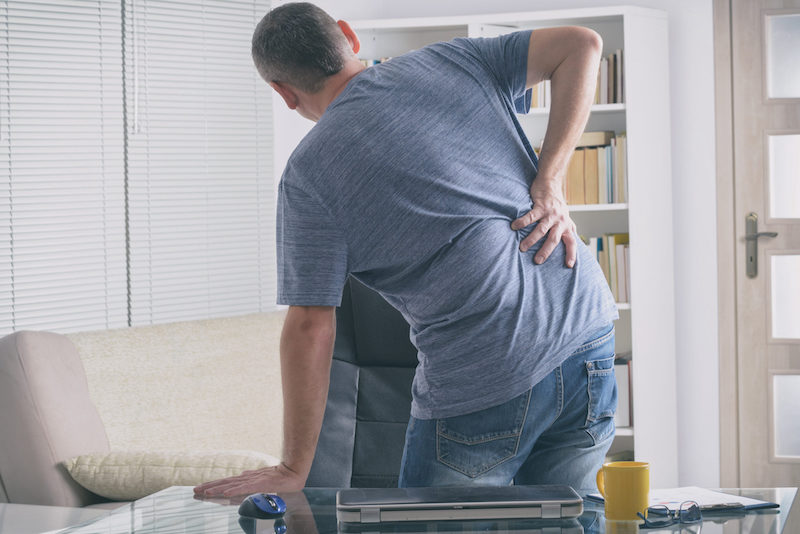Do Broken Bones Heal Stronger?

August 02, 2021
Have you ever heard someone say that when you break a bone, the healing process makes it stronger than it was in the first place? This often-repeated notion may give you the idea that after your broken bone heals, it will be tougher than ever and won’t break again, but this isn’t actually true.
Having had a previous break won’t protect you from breaking the same bone again, if you happen to experience trauma to the same body part. Once your broken bone heals fully, it should be just as strong as the rest of your bones, so you won’t be more or less likely to break it than another bone.
What happens when your bone breaks
After you break a bone, your body begins the healing process. At first, a blood clot forms at the site, which protects the injured spot. Then, within days, a special callus forms at the break, which gradually helps to reconnect the broken edges of bone.
Initially, the callus is soft and made of collagen, but over time, it becomes harder, due to calcium deposits that arrive to mend the bone. New cells form at the fracture site, connecting the broken pieces together again. Once the bone reconnects, the callus breaks down, so that the bone retains its original shape.
Why the break site is briefly stronger than surrounding bone
A doctor should put you in a cast to keep you immobilized while your bone is healing. Because you aren’t using the injured body part while it’s in a cast, the bone becomes weaker. (If you’ve ever seen someone’s arms side-by-side after one arm was removed from a cast, you know that the unused arm temporarily atrophies due to lack of use.)
At the same time, the fracture site is being fortified with calcium deposits and building itself back up. For this brief period of time, the calcium-fortified region of bone may be stronger than the surrounding healthy bone, which has weakened due to lack of use.
Ways that you can strengthen your bones
There are more reliable ways to strengthen your bones than waiting for a broken bone to heal. Try adopting these healthy habits to help keep your bones healthy:
- Eat calcium-rich foods. Include cheese and other dairy products; green vegetables, like kale and broccoli; and fortified foods and beverages, like cereal and orange juice in your diet. The Recommended Dietary Allowance (RDA) for calcium is 1,000 mg for women up to age 50 and men up to age 70; then, the RDA increases to 1,200 mg.
- Eat foods rich in vitamin D. This vitamin helps your body better absorb calcium. Fish like salmon or trout is an excellent source of vitamin D, and some foods and beverages are fortified with the vitamin. The RDA is 15 mcg (600 IU) for adults up to age 70; then, the RDA increases to 20 mcg (800 IU).
- Exercise regularly. Weight-bearing exercise is best if you’re able, such as running, walking, stair-climbing, dancing, hiking or lifting weights.
- Quit smoking. Smoking has been associated with weaker bones, and quitting will improve your health in immeasurable ways.
- Limit your alcohol intake. When women have more than one drink per day or men have more than two drinks per day, it increases the risk of osteoporosis.
- Ask your doctor if you need supplements. If your diet isn’t rich in calcium and/or vitamin D, your doctor may suggest that you take daily supplements to boost your intake of these nutrients.
Next Steps & Resources:
- Meet our source: Michael Lu, M.D.
- To make an appointment with Dr. Lu or a doctor near you, call 800-822-8905 or visit our website.
The material provided through HealthU is intended to be used as general information only and should not replace the advice of your physician. Always consult your physician for individual care.
Find a doctor near me
Pain Relief Without Prescriptions

If you are dealing with chronic pain or pain after surgery, there are ways to get excellent pain relief without medication.
Dealing with Back Pain After Running
Find relief from running-related back pain. Learn prevention tips and when to see a doctor. Get expert advice and schedule an appointment today.
Find a doctor near me

Can COVID-19 Cause Back Pain?
COVID-19 may cause back pain. Drs. Parikh & Fleming explain causes and prevention. Learn back pain treatment options and find a specialist.

When to Apply Ice Vs. Heat Packs
Learn when to use ice or heat packs for pain relief. Dr. Rama explains cold vs. heat therapy for injury and chronic pain. Get relief; call 800-822-8905.

How to Avoid Slipping on Ice
Avoid winter falls! Dr. Porter shares tips for safer walking on ice, preventing injuries like ankle sprains and fractures. Learn how to walk and fall safely.
